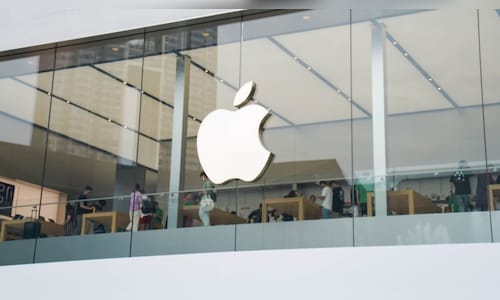[ad_1]
US President Donald Trump, on Wednesday, announced a comprehensive tariff regime, including a 34% tariff on Chinese imports, adding to an existing 20% tariff, culminating in a total of 54% on goods from China.
Given that approximately 90-95% of Apple’s products are manufactured in China, these tariffs directly escalate production costs. The immediate market reaction was stark, with Apple’s stock dropping 7.5% to $207.04 in premarket trading on Thursday.
In response to escalating trade tensions and to mitigate tariff impacts, Apple has been diversifying its manufacturing footprint. The company has increased production in India and Vietnam, aiming to reduce its reliance on Chinese manufacturing.
Also read: India analysing impact of US tariffs, may mean wins for some sectors losses for others: Sources
Analyst Ming-Chi Kuo projects that by 2025, at least 15% of global iPhone production will occur in India, up from 10-12% in 2024. The company also plans to move about 25% of the total production in the country, Commerce Minister Piyush Goyal said in 2023.
However, the new tariffs complicate this strategy, as products manufactured in these alternative locations are also subjected to significant tariffs—46% for Vietnamese-made goods and 27% for those produced in India.
Analysts warn that if Apple absorbs these costs without raising prices, its profit margins could shrink by 8.5-9%. This scenario could also lead to a 14% reduction in yearly net profits.
“Apple could reduce the damage by securing tariff exemptions for India and Vietnam. If that happens, its profit loss could be limited to 5.5-6%. And if India ramps up iPhone production to 30% of global supply, the impact could shrink to just 1-3%,” Kuo said.
Also read: Trump’s tariff hit list: See how each country stacks up
To counteract these financial pressures, Apple has several options:
Price Adjustments: Passing on some of the increased costs to consumers, particularly in the US market, where high-end iPhones constitute a significant portion of sales.
Supply Chain Negotiations: Pressuring suppliers to reduce costs to help offset tariff-induced expenses.
Operational Efficiencies: Enhancing production efficiencies and exploring further diversification of manufacturing locations to minimize tariff exposure.
Despite these challenges, industry experts believe that any dip in Apple’s gross margin below 40% would be temporary. The company’s proactive strategies and strong market position are expected to stabilize long-term profitability.
Even if Apple weathers the tariff storm, the broader economy could suffer. Economists predict that these trade policies could raise US inflation by 1% and reduce economic growth to 1.5%, potentially exacerbating global cost-of-living pressures.
Higher trade costs might slow consumer spending and lengthen iPhone upgrade cycles, meaning people hold onto their devices longer instead of buying new ones.
Also Read: What will be the impact of Trump’s reciprocal tariffs on India?
[ad_2]
Source link










